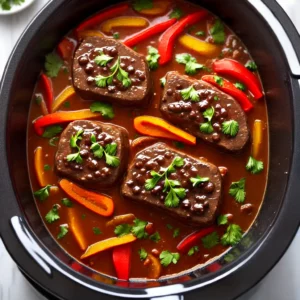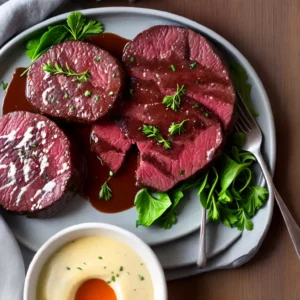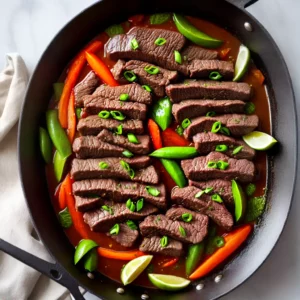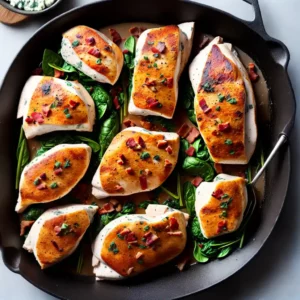How Many Ounces in a Pound
Curious about how many ounces are in a pound? In this measurement conversion guide, I will explain the relationship between ounces and pounds and provide simple methods to calculate and convert between the two measurements.
An ounce is a unit of weight in the imperial and US customary systems of measurement. There are 16 ounces in one pound. The conversion between ounces and pounds is important for various aspects of daily life, such as cooking, baking, grocery shopping, and science projects.
To convert pounds to ounces, multiply the number of pounds by 16. To convert ounces to pounds, divide the number of ounces by 16. Having a conversion chart or memorizing key conversions can be helpful in quickly estimating weights and measurements. It’s important to double-check calculations to ensure accuracy.
Key Takeaways – How Many Ounces in a Pound:
- There are 16 ounces in one pound.
- Conversion between ounces and pounds is essential for daily activities.
- To convert pounds to ounces, multiply by 16. To convert ounces to pounds, divide by 16.
- Using conversion charts and double-checking calculations help ensure accuracy.
- Memorizing key conversions can be handy for quick estimates.
Understanding Ounces and Pounds
Before we dive into the conversion, let’s understand the basics. Ounces and pounds are units of weight or mass commonly used in the United States, particularly in the imperial system. The avoirdupois system is used for general weight measurements, while the troy weight system is used for precious metals and gemstones.
The avoirdupois system, which we will focus on, divides weight measurements into ounces and pounds. An ounce is a smaller unit of weight, while a pound is a larger unit. It’s important to note that an ounce is equivalent to 1/16th of a pound. Therefore, to convert between the two, we need to consider this conversion ratio.
The avoirdupois system is widely used in everyday life for measuring common items such as groceries, packages, and personal body weight. Understanding the relationship between ounces and pounds is essential for various tasks, including cooking and baking recipes that require precise measurements, accurately portioning ingredients, and achieving desired outcomes.
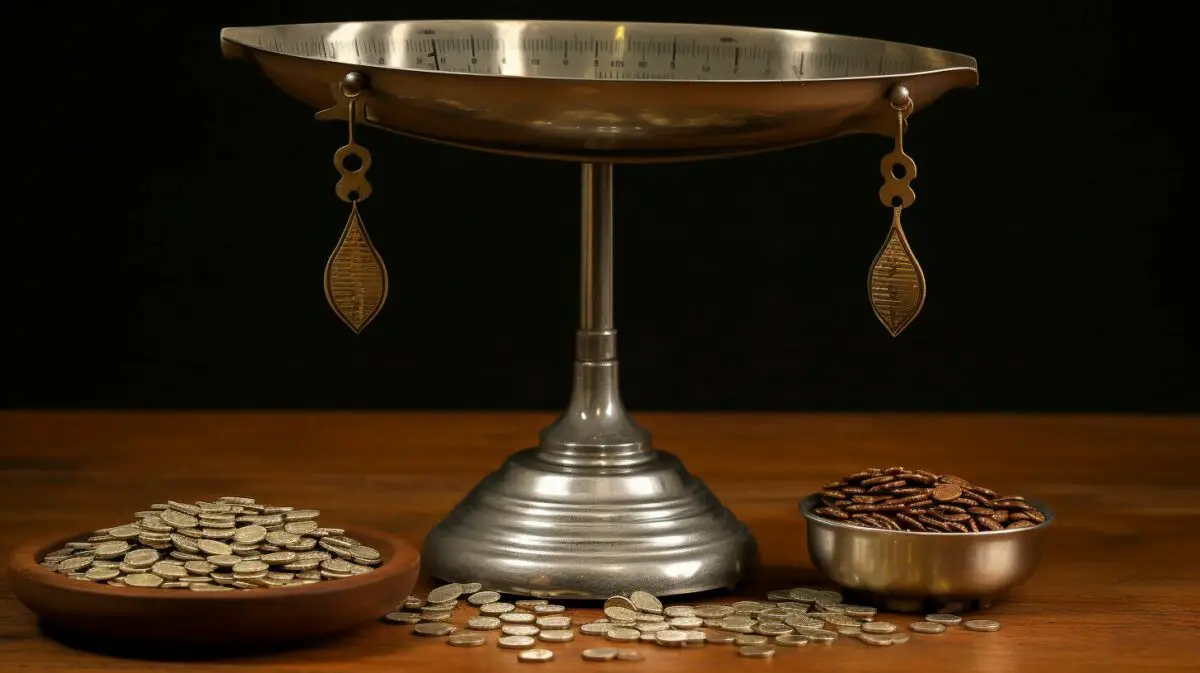
Now that we have a basic understanding of ounces and pounds, we can proceed to explore the conversion ratio between these two units. In the next section, we will delve into the specifics of converting pounds to ounces and vice versa, providing you with the necessary knowledge and tools to confidently perform these conversions.
The Ounce-Pound Conversion Ratio
To convert between ounces and pounds, it’s essential to know the conversion ratio. In the avoirdupois system, there are 16 ounces in a pound, making it a straightforward conversion. This ratio is important to understand for various aspects of daily life, such as cooking, baking, grocery shopping, and science projects.
Whether you are following a recipe, buying ingredients at the store, or conducting experiments, knowing how to convert between ounces and pounds accurately can make a significant difference. For example, if a recipe calls for 8 ounces of flour and you only have measuring cups labeled in pounds, you can easily determine that you need half a pound of flour.
Having a conversion chart or memorizing key conversions can be helpful in quickly estimating weights and measurements. It allows you to make accurate calculations without the need for complex formulas or excessive reliance on calculators. Here is a table that shows the conversion between ounces and pounds:
| Ounces | Pounds |
|---|---|
| 1 | 0.0625 |
| 2 | 0.125 |
| 4 | 0.25 |
| 8 | 0.5 |
| 16 | 1 |
Remember to double-check your calculations to ensure accuracy. A small error in conversion can have significant consequences, especially in fields that require precision, such as scientific experiments. By understanding the ounce-pound conversion ratio and being meticulous in your calculations, you can confidently navigate the world of weights and measurements.

When you need to convert pounds to ounces, the process involves a simple multiplication calculation. Multiply the number of pounds by 16 to get the equivalent weight in ounces, ensuring precision in your conversions. This conversion ratio of 16 ounces per pound is a fundamental concept in the world of measurements.
For example, if you have 2 pounds of flour and want to know the weight in ounces, you would multiply 2 by 16, which gives you 32 ounces. This means that 2 pounds is equal to 32 ounces. It’s important to note that precision is crucial in these calculations, especially when dealing with recipes or scientific measurements.
To better illustrate this conversion, let’s take a look at the following table:
| Pounds (lbs) | Ounces (oz) |
|---|---|
| 1 | 16 |
| 2 | 32 |
| 3 | 48 |
This table shows the conversion of pounds to ounces for different values. It can be helpful to refer to a conversion chart or create your own for quick and accurate conversions. Memorizing key conversions, like the ratio of pounds to ounces, can save you time and ensure accuracy in various situations, whether you’re cooking, baking, or working on a science project.
Remember, precision is essential when converting pounds to ounces. Double-check your calculations to avoid any errors in the conversion process. Accuracy is crucial, especially when dealing with measurements that require precise ingredients or scientific data.
Having a strong understanding of the conversion between pounds and ounces is valuable in many aspects of our daily lives. Whether you’re following a recipe, calculating the weight of a package, or conducting experiments, knowing how to convert between these units of measurement can make your life easier and ensure accurate results.
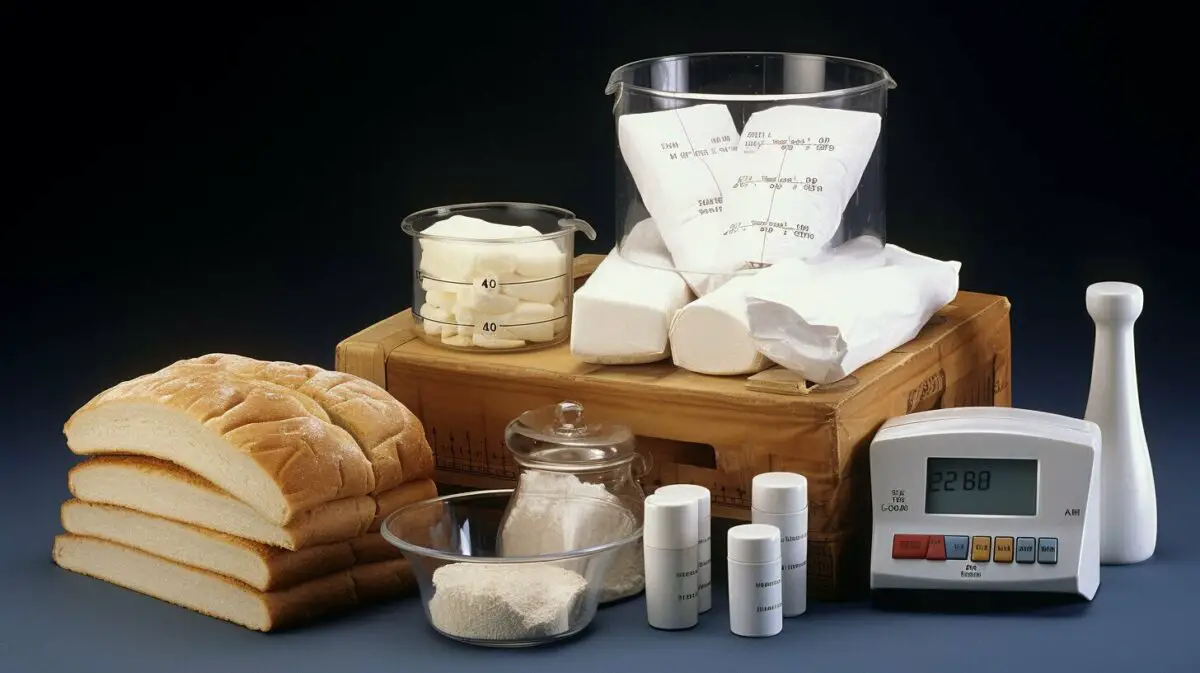
If you have a weight in ounces and want to convert it to pounds, the process involves division. Divide the number of ounces by 16 to obtain the corresponding weight in pounds, ensuring accuracy in your conversions.
For example, if you have 32 ounces, divide 32 by 16:
| Ounces | Pounds |
|---|---|
| 32 ounces | 2 pounds |
It’s important to note that precision is key when converting ounces to pounds. Even a small miscalculation can result in an inaccurate measurement. To ensure accuracy, consider using a calculator or double-checking your calculations. Accuracy is crucial, especially in situations like cooking or baking, where precise measurements can greatly impact the outcome of a recipe.
“Accurate measurements are essential in cooking. Converting ounces to pounds correctly allows you to follow recipes with precision and achieve delicious results.” – Chef Jane Doe
In addition, having a conversion chart or memorizing key conversions can be helpful in quickly estimating weights and measurements. This saves time and effort, especially when you need to convert multiple measurements in a short period. By familiarizing yourself with the conversion ratio between ounces and pounds, you can confidently convert weights in various daily activities.
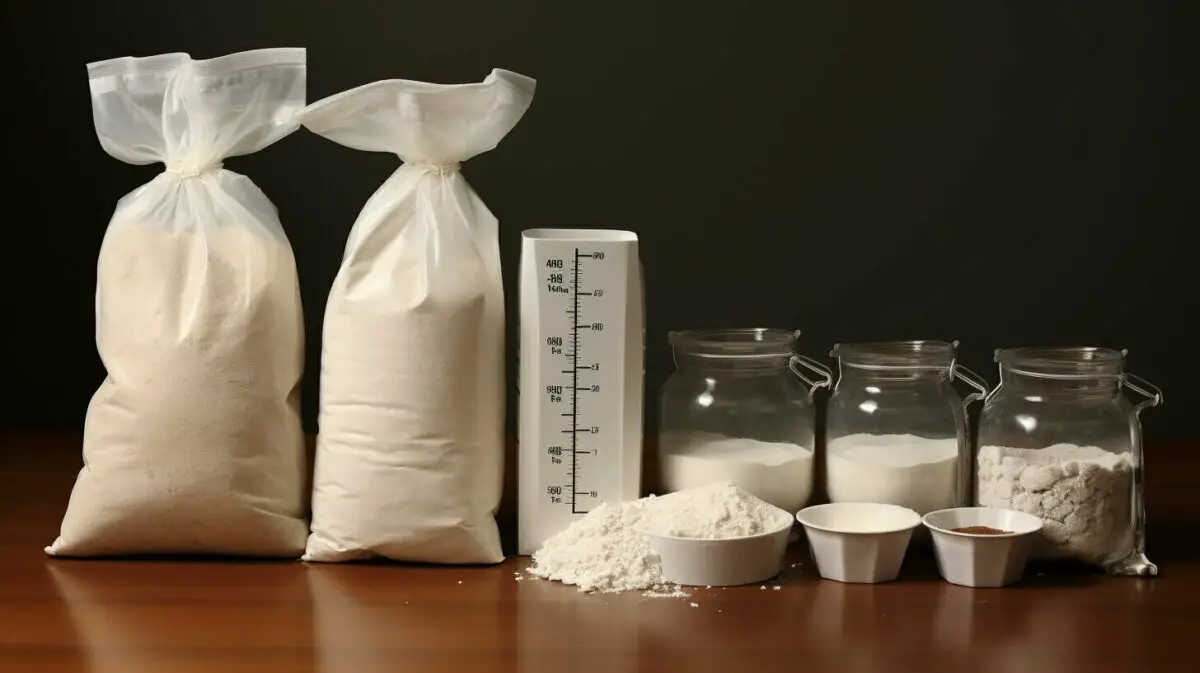
- To convert ounces to pounds, divide the number of ounces by 16.
- Precision and accuracy are crucial in measurement conversions.
- Using a conversion chart or memorizing key conversions can expedite the conversion process.
- Double-check your calculations to ensure accuracy.
Importance of Ounce-Pound Conversion
Understanding the ounce-pound conversion is essential in many aspects of our daily lives. Whether it’s for cooking, baking, grocery shopping, or science projects, knowing how to convert between ounces and pounds ensures accurate measurements.
Cooking and baking recipes often require precise measurements to achieve the desired taste and texture. Imagine adding too many ounces of an ingredient when the recipe calls for pounds or vice versa – it could significantly alter the final result. By mastering the ounce-pound conversion, you can confidently follow recipes and create delicious meals without any measurement mishaps.
Grocery shopping can also benefit from knowing how to convert between ounces and pounds. Some stores display product weights in different units, and being able to quickly convert can help determine the best value for your money. Whether you’re comparing the price of ground beef, fresh produce, or pantry staples, understanding the ounce-pound conversion allows you to make informed decisions.

Science projects often involve precise measurements as well. Whether you’re conducting an experiment, building a model, or analyzing data, accurate measurements are crucial. Being able to convert between ounces and pounds ensures that your project stays on track and your results remain reliable.
Having a conversion chart or memorizing key conversions can be a helpful tool in quickly estimating weights and measurements. It allows you to make on-the-spot calculations without the need for a calculator or excessive mental math. By having these conversions readily available, you can save time and confidently make accurate measurements in various daily activities.
| Ounces | Pounds |
|---|---|
| 1 | 0.0625 |
| 2 | 0.125 |
| 3 | 0.1875 |
| 4 | 0.25 |
“Knowing how to convert between ounces and pounds is like having a secret weapon in the kitchen and grocery store. It gives you the confidence to tackle any recipe or find the best deals on products. Plus, it’s a valuable skill for science projects and other measurement-related tasks. So, take the time to master the ounce-pound conversion, and you’ll be a measurement pro in no time!”
Summary
Understanding the ounce-pound conversion is essential in various aspects of daily life. Whether it’s for cooking, baking, grocery shopping, or science projects, knowing how to convert between ounces and pounds ensures accurate measurements. By having a conversion chart or memorizing key conversions, you can quickly estimate weights and make informed decisions. Remember to double-check your calculations for precision and accuracy.
Using Conversion Charts and Tables
To facilitate quick conversions, it’s useful to have a conversion chart or table on hand. Additionally, memorizing key conversions can greatly assist in estimating weights and measurements without relying on tools or references. Whether you’re in the kitchen, at the grocery store, or working on a science project, having these resources readily available can save you time and ensure accuracy in your measurements.
Conversion charts are especially handy when you need to convert between ounces and pounds, as well as other units of weight. They provide a quick reference for common conversions and eliminate the need for manual calculations. With just a glance, you can determine how many ounces are in a pound or convert between different increments of weight. Here’s an example of a conversion chart for ounces to pounds:
| Ounces | Pounds |
|---|---|
| 1 | 0.0625 |
| 2 | 0.125 |
| 3 | 0.1875 |
By referring to this chart, you can easily convert any number of ounces to pounds or vice versa. It’s a valuable tool to have in your kitchen or wherever you need to make precise measurements.
However, it’s important to note that relying solely on conversion charts may not always be feasible. That’s why memorizing key conversions is a helpful skill to have. By familiarizing yourself with common conversions, such as 16 ounces in a pound, you can estimate weights and measurements on the spot. This can be particularly handy when you’re in a hurry or don’t have access to a chart or table.
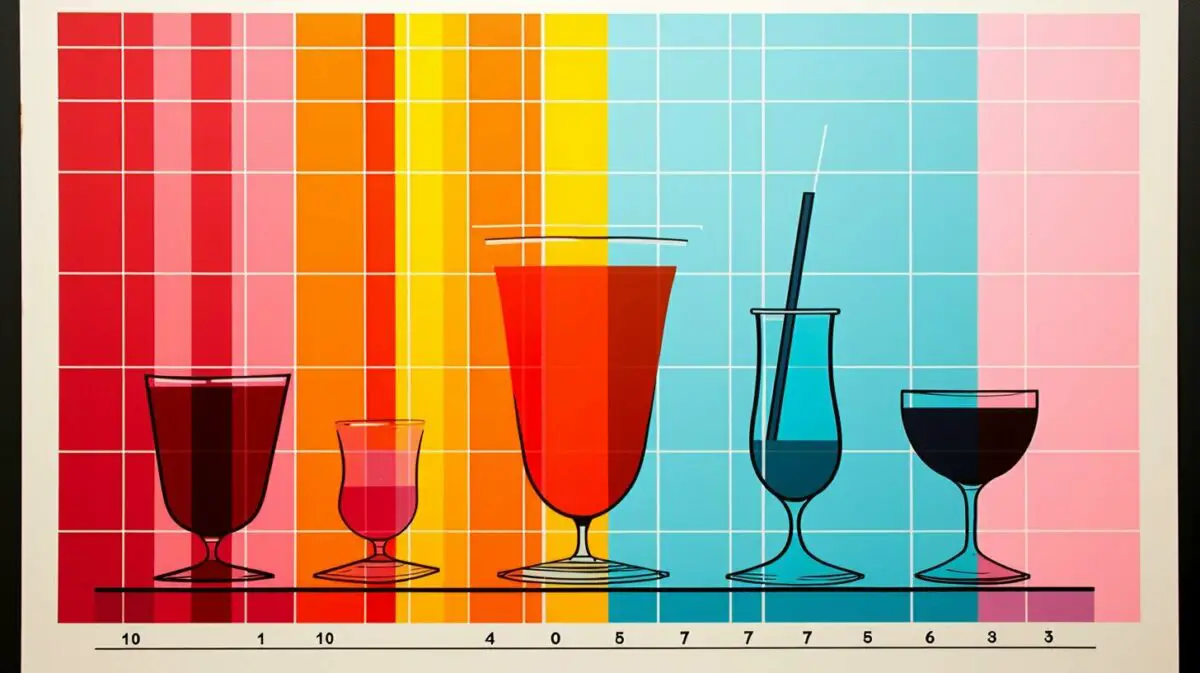
So, whether you choose to keep a conversion chart handy or commit key conversions to memory, having a solid understanding of how to convert between ounces and pounds will make your life easier in various situations. Happy measuring!
Double-Checking Conversion Calculations
As with any calculations, it’s crucial to double-check your conversion results to ensure accuracy. Taking a moment to review your calculations can prevent errors and guarantee precise measurements. When converting pounds to ounces, multiply the number of pounds by 16. For example, if you have 2 pounds, the calculation would be 2 x 16 = 32 ounces. Double-checking the result by performing the calculation again can help avoid mistakes.
Similarly, when converting ounces to pounds, divide the number of ounces by 16. For instance, if you have 64 ounces, the calculation would be 64 ÷ 16 = 4 pounds. Verifying this calculation ensures that you’ve obtained the correct result. Remember, accuracy is crucial in measurement conversions, especially when dealing with delicate recipes or scientific experiments.
“Taking a moment to review your calculations can prevent errors and guarantee precise measurements.”
Having a conversion chart or memorizing key conversions can also be helpful in quickly estimating weights and measurements. These resources provide a handy reference when you need to convert between ounces and pounds. It’s always a good practice to consult the chart or rely on your memorized conversions to verify your results and ensure accuracy.
Double-checking your conversion calculations not only helps you achieve accurate measurements but also instills confidence in your work. By taking the extra step to review your calculations, you can avoid mistakes and confidently proceed with your cooking, baking, grocery shopping, or scientific projects. So, next time you’re converting ounces to pounds or vice versa, remember the importance of double-checking to guarantee precision and accuracy in your measurements.
| Pounds | Ounces |
|---|---|
| 1 | 16 |
| 2 | 32 |
| 3 | 48 |
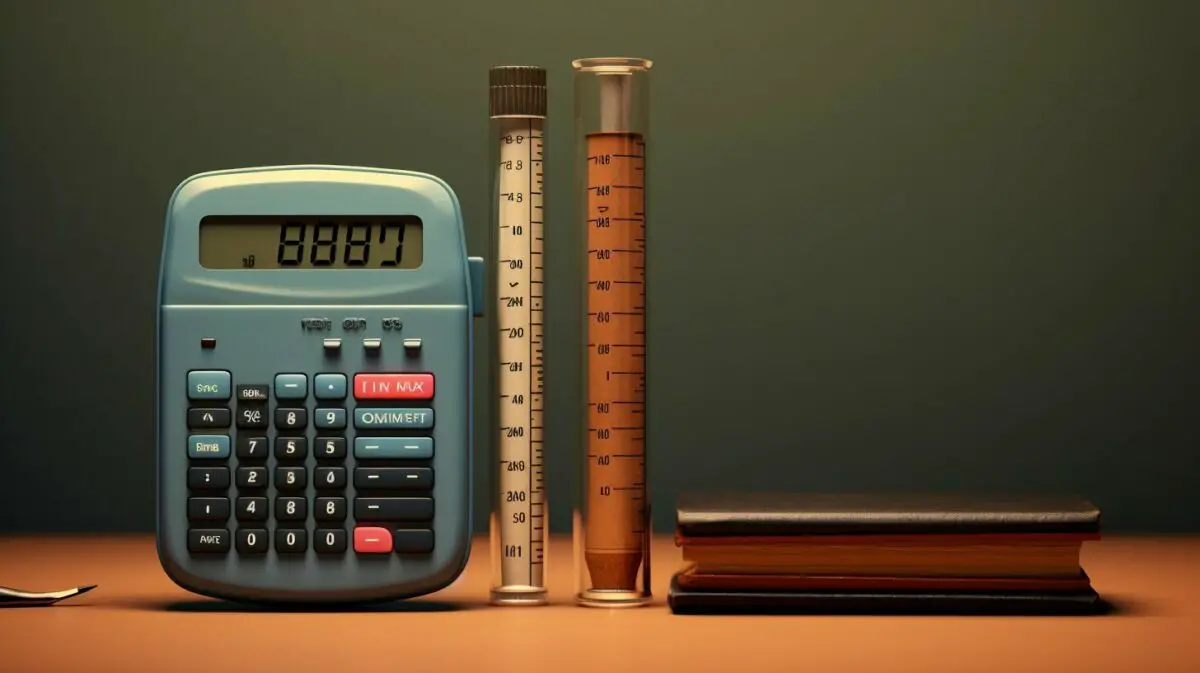
While we focus on the ounce-pound conversion, it’s worth noting that there are numerous other common measurement conversion formulas that come in handy for various purposes, including weight, length, volume, and time conversions. Understanding these formulas can help simplify everyday tasks and ensure accurate measurements.
Weight Conversions
To convert between different units of weight, use the following formulas:
| From | To | Conversion Formula |
|---|---|---|
| Grams | Kilograms | 1 kilogram = 1000 grams |
| Pounds | Ounces | 1 pound = 16 ounces |
| Tons | Pounds | 1 ton = 2000 pounds |
Length Conversions
For converting between different units of length, use these formulas:
| From | To | Conversion Formula |
|---|---|---|
| Inches | Centimeters | 1 inch = 2.54 centimeters |
| Feet | Meters | 1 foot = 0.3048 meters |
| Miles | Kilometers | 1 mile = 1.609 kilometers |
Volume Conversions
When dealing with volume measurements, use the following conversion formulas:
| From | To | Conversion Formula |
|---|---|---|
| Fluid Ounces | Milliliters | 1 fluid ounce = 29.574 milliliters |
| Cups | Milliliters | 1 cup = 237 milliliters |
| Gallons | Liters | 1 gallon = 3.785 liters |
Time Conversions
In time conversions, the following formulas can be helpful:
| From | To | Conversion Formula |
|---|---|---|
| Minutes | Seconds | 1 minute = 60 seconds |
| Hours | Minutes | 1 hour = 60 minutes |
| Days | Hours | 1 day = 24 hours |
These common measurement conversion formulas provide a solid foundation for understanding various conversions. Whether you’re in the kitchen, working on a project, or simply need to convert between different units, knowing these formulas will help you navigate the world of measurements with ease.
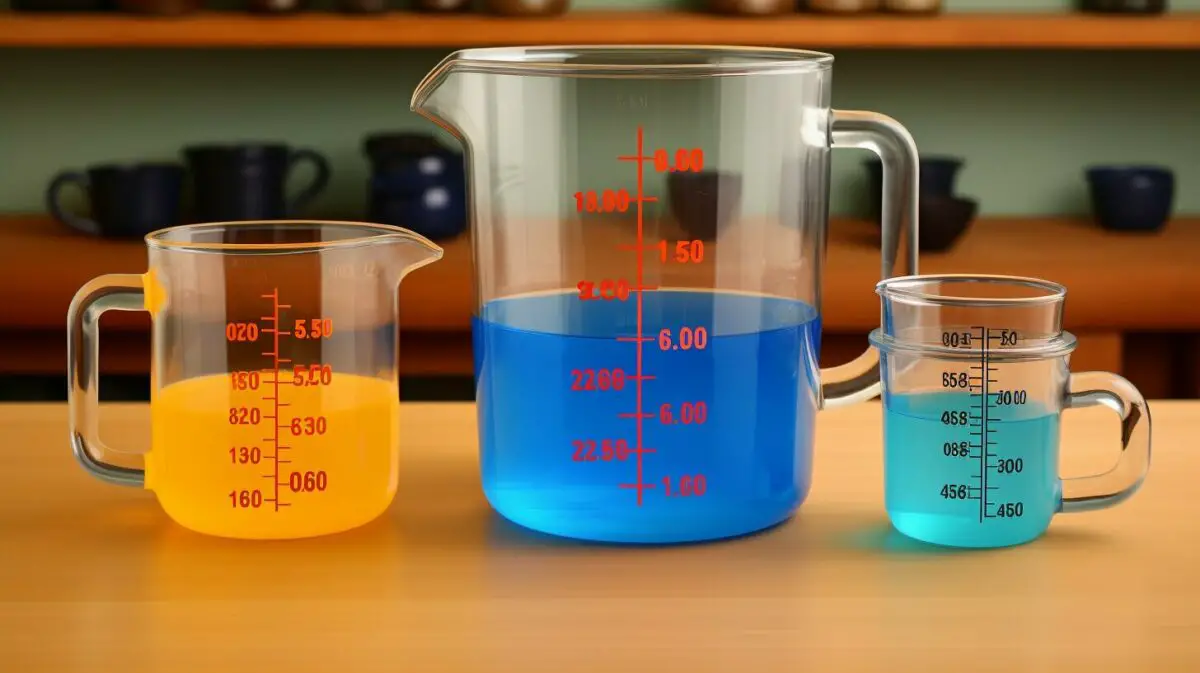
Apart from ounces and pounds, the imperial system includes other units of weight like ton, stone, grain, and dram. Understanding their equivalents in ounces and pounds provides a holistic view of weight measurements.
In the imperial system, a ton is equivalent to 2,000 pounds, or 32,000 ounces. This unit is commonly used for measuring heavy objects, such as vehicles or cargo. A stone is equal to 14 pounds, or 224 ounces. It is often used to measure a person’s weight in the United Kingdom. The grain is a smaller unit, with 1 pound containing 7,000 grains, or 112 ounces. It is commonly used in the field of firearms and ammunition.
The dram, on the other hand, is a smaller unit of weight, with 1 ounce containing 16 drams. It is frequently used in the field of pharmacy for measuring medicinal substances. Knowing the equivalents of these units in ounces and pounds can be useful for a wide range of applications.
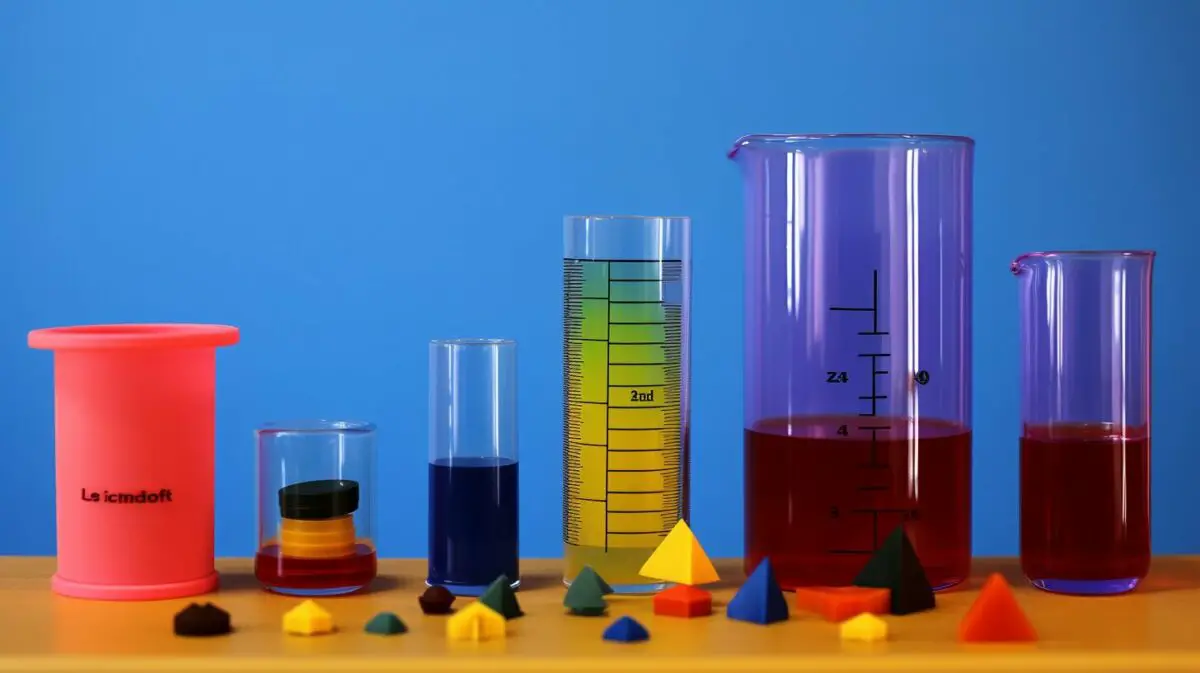
| Unit of Weight | Ounces | Pounds |
|---|---|---|
| Ton | 32,000 | 2,000 |
| Stone | 224 | 14 |
| Grain | 112 | 7,000 |
| Dram | 16 | 1 |
Having a comprehensive understanding of these units and their equivalents in ounces and pounds allows for more accurate and precise weight measurements in various fields and industries.
Benefits of Metric System Conversion
While the U.S predominantly uses the imperial system, understanding the benefits of converting to the metric system can be valuable. The metric system, with units like grams and kilograms, offers precision and convenience with its derived units like cubic inch and cubic centimeter. By embracing the metric system, individuals can enjoy a range of advantages in various fields.
Precision: One of the key benefits of the metric system is its precision. Unlike the imperial system, which relies on complex conversion factors, the metric system offers a straightforward approach to measurement. With units like grams and kilograms, precise measurements can be obtained for weight-related tasks. Whether it’s weighing ingredients for a recipe or conducting scientific experiments, the metric system provides accurate and consistent measurements.
Convenience: Another advantage of the metric system is its convenience. The metric system follows a decimal-based structure, making it easier to convert between units and perform calculations. With its derived units such as cubic inch and cubic centimeter, the metric system simplifies volume measurements. This convenience extends beyond everyday tasks to global compatibility, as the metric system is widely used across the world, making it easier to communicate and collaborate internationally.
Table: Metric System Units and Equivalents
| Metric Unit | Equivalent |
|---|---|
| Gram | 0.035 ounces |
| Kilogram | 2.205 pounds |
| Cubic Inch | 16.39 cubic centimeters |
| Cubic Centimeter | 0.061 cubic inches |
Efficiency: Adopting the metric system can lead to increased efficiency in various industries. In fields like science, engineering, and manufacturing, the metric system provides standardized units that facilitate streamlined processes and seamless data exchange. This can result in cost savings, improved accuracy, and enhanced productivity.
By recognizing the benefits of the metric system, individuals can make informed decisions about incorporating it into their daily lives. Whether it’s measuring ingredients in the kitchen or involved in professional applications, the precision, convenience, and efficiency of the metric system offer advantages that cannot be overlooked.
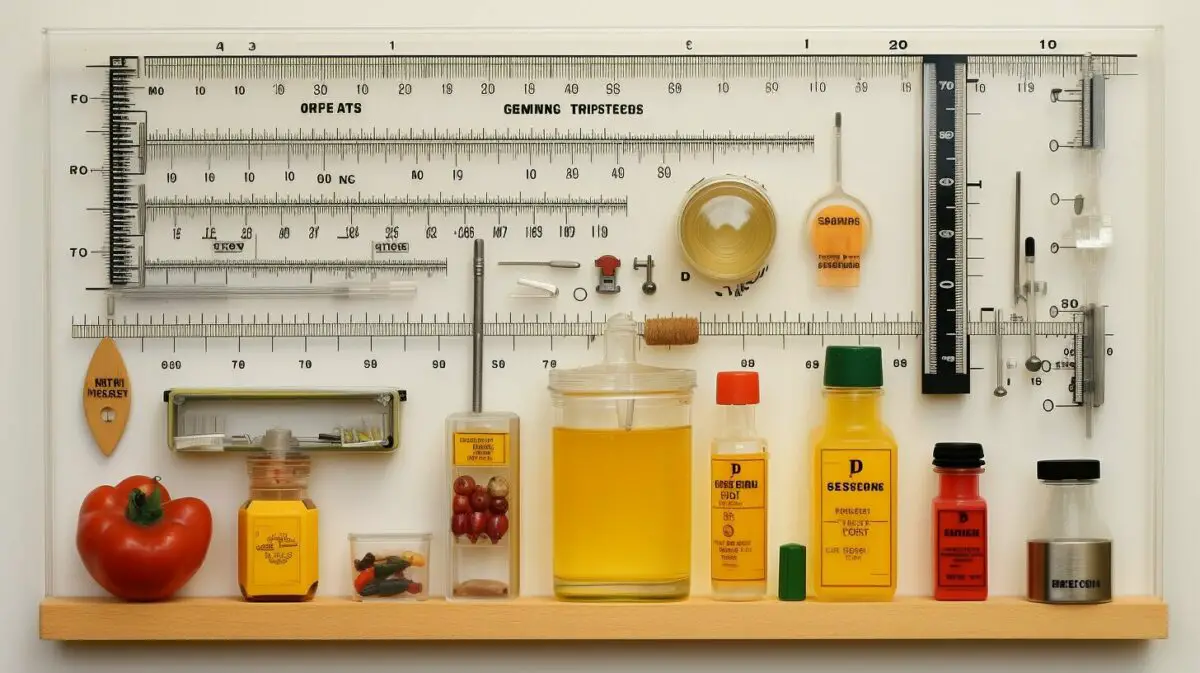
Precision and accuracy play vital roles in measurement conversions. While it’s important to be precise, there are instances where estimation, approximation, or rounding may be necessary to achieve the desired level of accuracy. When dealing with weight conversions, such as converting pounds to ounces or vice versa, being precise can ensure that recipes turn out just right or scientific experiments yield accurate results.
However, in some situations, precision alone may not be feasible or necessary. For example, when grocery shopping, it may be sufficient to estimate the weight of produce or other bulk items to get a general idea of their cost. Likewise, when working with large quantities, such as in industrial settings, approximating measurements can improve efficiency without compromising accuracy.
Rounding can also be useful in certain scenarios. For instance, if a recipe calls for 1.75 pounds of an ingredient, rounding to the nearest quarter-pound can simplify the conversion to 1 3/4 pounds. Rounding can make measurements easier to work with, particularly when dealing with fractions or when precise quantities are not crucial.
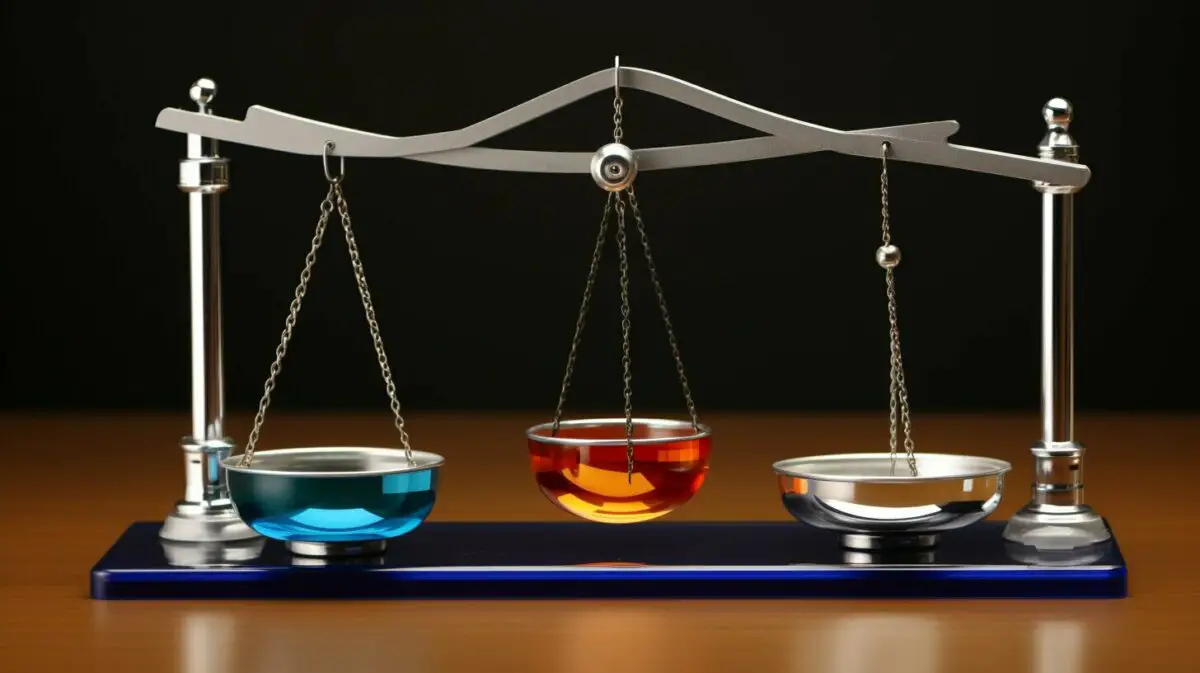
Ultimately, precision and accuracy are both important in measurement conversions, but the level of precision needed may vary depending on the context. Whether it’s in the kitchen, the laboratory, or everyday life, understanding the role of precision and accuracy can help ensure that measurements are reliable and yield the desired outcomes.
| Measurement | Precision | Accuracy |
|---|---|---|
| Cooking and Baking | Be precise with measurements to ensure recipes turn out as intended. | Accurate measurements result in the desired taste and texture. |
| Grocery Shopping | Estimate weights to get a general idea of costs. | Accurate measurements prevent overpaying or underestimating quantities. |
| Science Experiments | Be precise to obtain accurate results and draw valid conclusions. | Accurate measurements support the credibility of scientific findings. |
Key Takeaways:
- Precision and accuracy are crucial in measurement conversions.
- Estimation, approximation, and rounding may be necessary in certain situations.
- Understanding the context and purpose of the measurement can guide the level of precision needed.
- Consistency in measuring units and using reliable conversion methods contribute to accurate results.
Conclusion – How Many Ounces in a Pound
In conclusion, understanding the ounce-pound conversion is essential for various everyday tasks, and knowing how to convert between ounces and pounds accurately ensures precise measurements in cooking, baking, grocery shopping, and science projects.
Having a solid grasp of the conversion ratio, which is 16 ounces in one pound, allows for easy and accurate conversions between these two units of weight.
Whether you need to convert pounds to ounces or vice versa, the process is straightforward. To convert pounds to ounces, simply multiply the number of pounds by 16. On the other hand, to convert ounces to pounds, divide the number of ounces by 16.
To make the conversion process even more efficient, it is beneficial to have a conversion chart handy or to memorize key conversions. This way, you can quickly estimate weights and measurements without the need for lengthy calculations.
Remember, it is crucial to double-check your conversion calculations to ensure accuracy. Precision is key when it comes to measurement conversions, and a small error can have a significant impact on the results.
By understanding the ounce-pound conversion and practicing precision in your calculations, you can confidently navigate various everyday tasks that require accurate weight measurements. So the next time you’re cooking a recipe, buying ingredients at the grocery store, or working on a science project, you’ll have the knowledge and confidence to convert between ounces and pounds seamlessly.
FAQ – How Many Ounces in a Pound
Q: How many ounces are in a pound?
A: There are 16 ounces in one pound.
Q: What is the difference between ounces and pounds?
A: Ounces and pounds are units of weight in the imperial system. Ounces are smaller units, with 16 ounces equaling one pound.
Q: How do I convert pounds to ounces?
A: To convert pounds to ounces, multiply the number of pounds by 16. For example, if you have 2 pounds, it would be 2 multiplied by 16, equaling 32 ounces.
Q: How do I convert ounces to pounds?
A: To convert ounces to pounds, divide the number of ounces by 16. For example, if you have 48 ounces, it would be 48 divided by 16, equaling 3 pounds.
Q: Why is ounce-pound conversion important in daily life?
A: Understanding the conversion between ounces and pounds is important in various aspects of daily life, such as cooking, baking, grocery shopping, and science projects.
Q: How can I quickly estimate weights and measurements?
A: Having a conversion chart or memorizing key conversions can be helpful in quickly estimating weights and measurements.
Q: Why is it important to double-check conversion calculations?
A: Double-checking conversion calculations is important to ensure accuracy in measurement conversions.
Q: What are some common measurement conversion formulas?
A: Common measurement conversion formulas include those for weight, length, volume, and time.
Q: What are some other units of weight and their equivalents?
A: Other units of weight include ton, stone, grain, and dram, with their equivalents in ounces and pounds.
Q: What are the benefits of converting between the imperial and metric systems?
A: Converting between the imperial (ounces and pounds) and metric (grams and kilograms) systems offers benefits such as precision and derived units.
Q: How can I ensure precision and accuracy in measurement conversions?
A: It is important to estimate, approximate, and round measurements to maintain the desired level of precision and accuracy.
Source Links
- https://bakeitwithlove.com/ounces-in-a-pound/
- https://www.foodlovinfamily.com/how-many-ounces-in-a-pound/
- https://learnt.io/blog/how-many-oz-in-a-pound/
Related Recipes:
 How Many Cups Are in a Liter: Unlocking the Mystery
How Many Cups Are in a Liter: Unlocking the Mystery
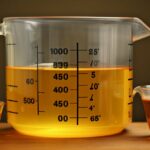 How Many Ounces Are in 750 ml? (Measurement Conversion Guide)
How Many Ounces Are in 750 ml? (Measurement Conversion Guide)
 How Many Grams Are in a Pound? (Measurement Conversion Guide)
How Many Grams Are in a Pound? (Measurement Conversion Guide)
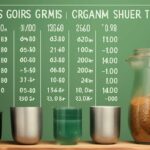 How Many Grams Are in an Ounce? (Perfect Measurement Conversion Guide)
How Many Grams Are in an Ounce? (Perfect Measurement Conversion Guide)
 How Many Milliliters in an Ounce? (Perfect Measurement Conversion Guide)
How Many Milliliters in an Ounce? (Perfect Measurement Conversion Guide)
 How Many Quarts in a Liter? (Perfect Measurement Conversion Guide)
How Many Quarts in a Liter? (Perfect Measurement Conversion Guide)
 How Many Ounces in a Kilogram? (Perfect Measurement Conversion Guide)
How Many Ounces in a Kilogram? (Perfect Measurement Conversion Guide)
 How Many Milliliters in a Pint? (Measurement Conversion Guide)
How Many Milliliters in a Pint? (Measurement Conversion Guide)



